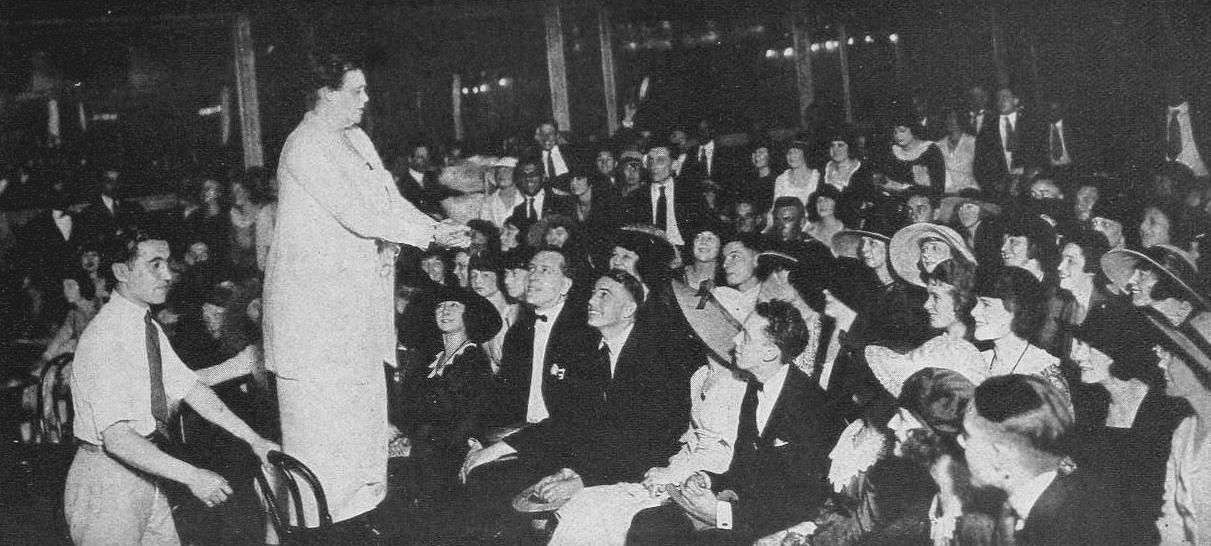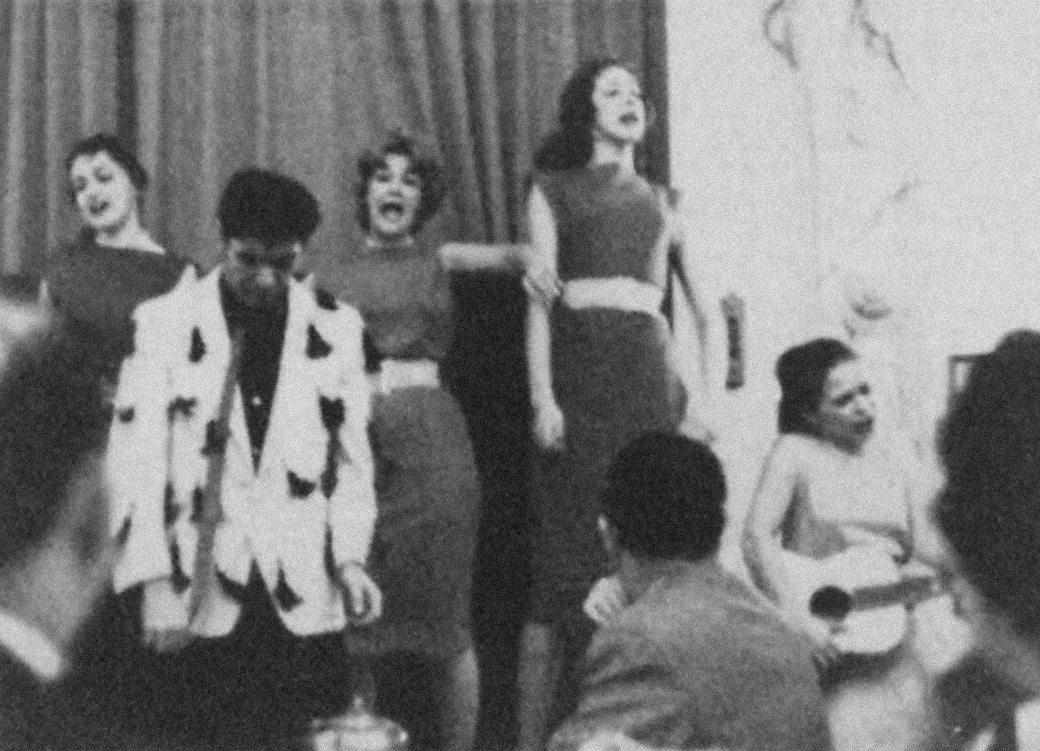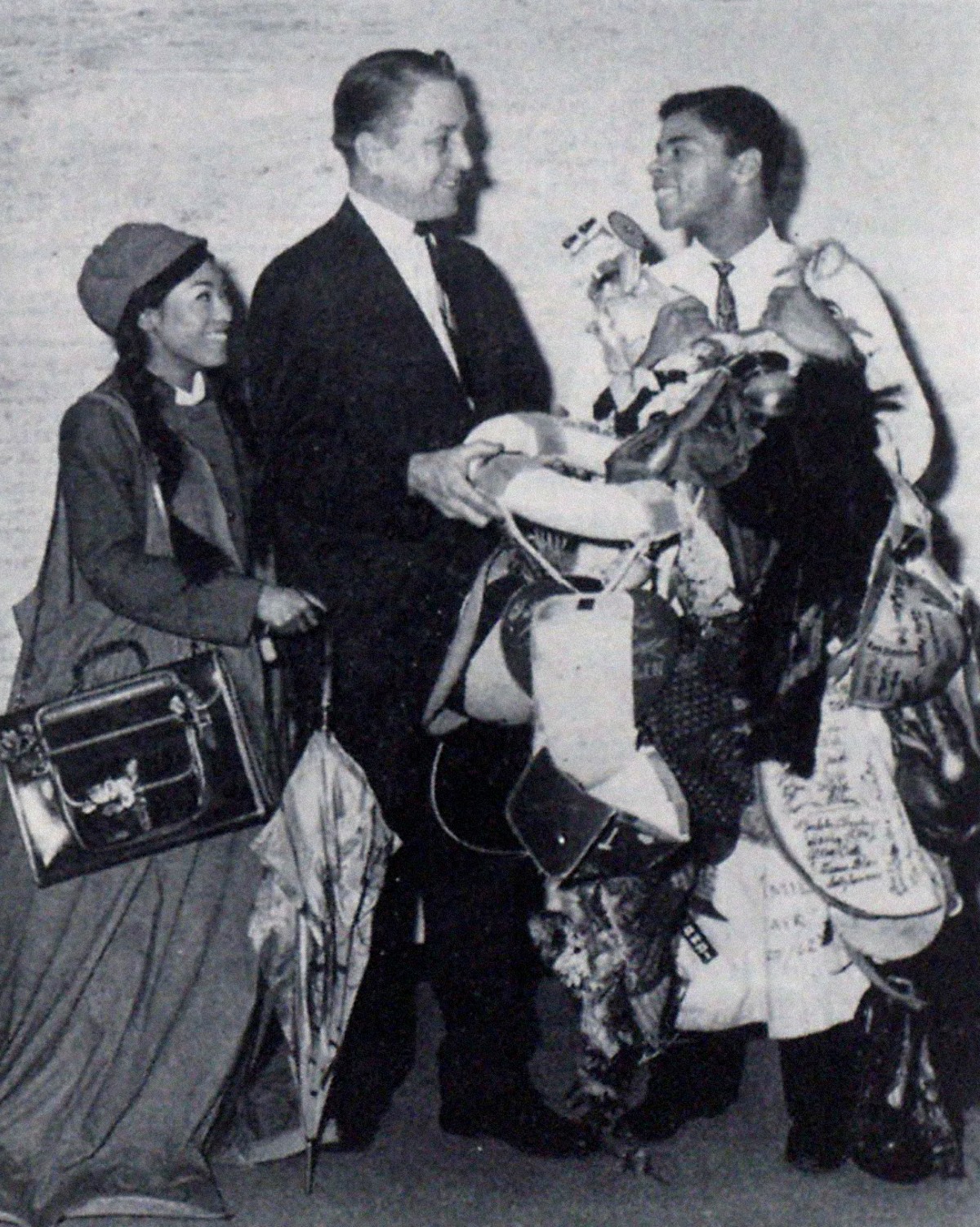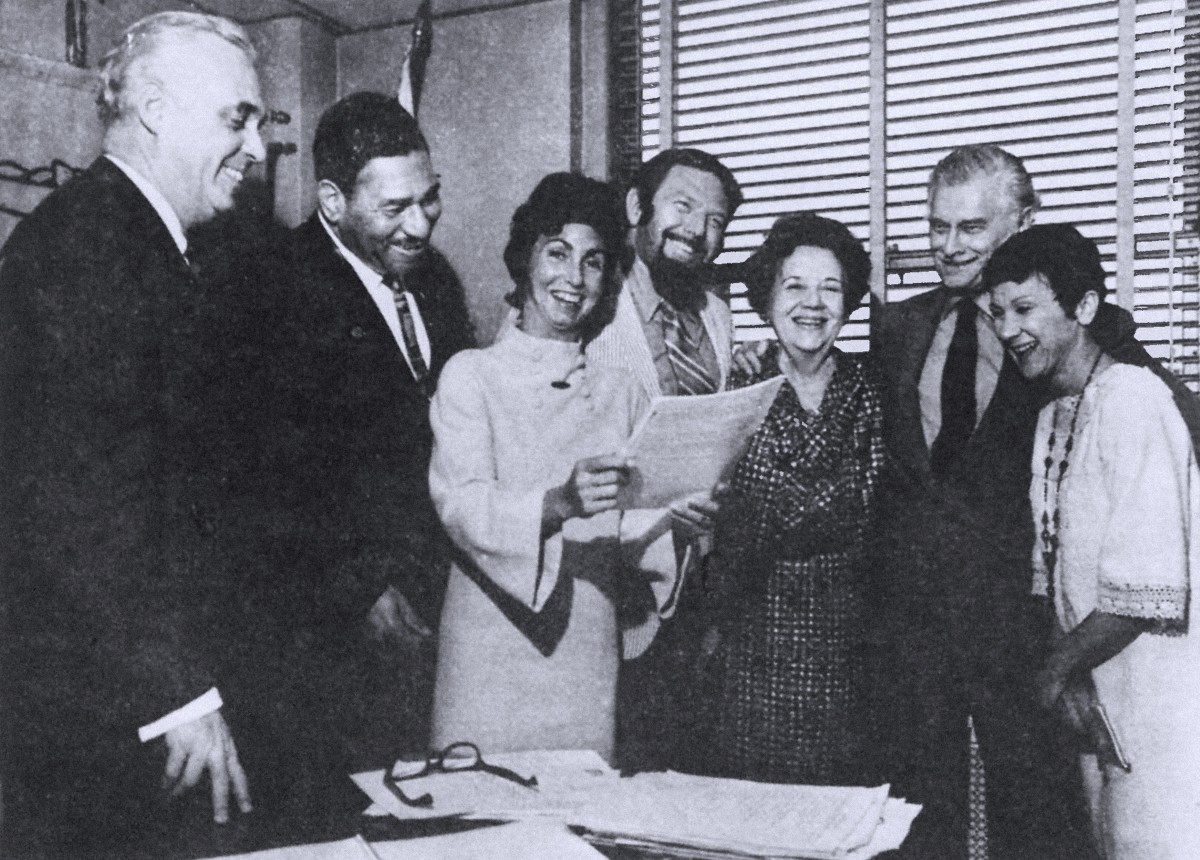It may seem impossible to picture Actors' Equity Association without its chorus members, but for decades, that was how the union worked. However, the chorus has been a part of the labor movement for almost as long as Equity has been in existence, as brave performers from the ensemble have demanded better, fairer, safer workplaces.
Nowadays, Equity has three job categories with contracts specific to each, but nothing that keeps a member from floating from one type of job to another. When Equity started, principal actors unionized on their own, but chorus performers quickly joined the fight. That led to two sibling unions coexisting for nearly 40 years, until they merged in 1955, exactly 70 years ago. Let's look back on what it meant to be a unionized worker as a chorus performer over the last century as we celebrate A Chorus Year.
Origins: The 1919 Strike
Actors' Equity Association was formed in 1913, but for the first few years, the union gained little traction and producers largely refused to acknowledge it. Then, in 1919, tensions came to a head and Equity held its historic first strike. Some key issues are eternal struggles, like wages and safety standards; others may surprise you. For example, it was standard practice that if a show closed early on the road, actors were expected to pay their own way back, and there were many cases of being stranded far from home.
Until this point, chorus performers had been entirely unrepresented; Equity was for principals only. (It was common for actors to also work as stage managers, and that job emerged as a distinct category in 1920.) The exclusion of chorus performers coincided with sometimes dismissive notions about the skills that these performers needed to succeed in the industry. Relatedly, while chorus work was not exclusively performed by women, it was overwhelmingly associated with "girls," and one slang word for them was "ponies." Stereotypes that chorus girls essentially served as set dressing or pursued their careers solely to seek a rich husband were rampant.
During the strike, employers tried to play chorus and principal actors against each other, by promoting chorus members to fill vacant principal roles or arguing that the principals were creating hardship for their fellow workers by striking. In one incident, a director even gathered the female chorus onstage to decry the strike before refunding the audience and sending them home.

Chorus member Billie Mason outside Equity headquarters during the 1919 strike.
These tactics did not work for long. Within a week of the strike, choruses were talking of striking as well. After all, they shared a lot of the concerns of their principal counterparts, in addition to often having worse pay or conditions. For example, while having to pay for one's own costume was sometimes a shared struggle, it had a greater impact on chorus workers, who might spend three weeks' worth of their salary for their onstage shoes and stockings.
At one climactic meeting of supportive chorus workers at the New Amsterdam Theatre, fifty more chorus actors from the Hippodrome (which as a "vaudeville house" had not been an Actors' Equity organizing target) marched in two by two. The assembled crowd of hundreds formed their own union: the Chorus Equity Association of America (initiation fee: $1). With Marie Dressler as their first president and funding from Lillian Russell (both of whom were formerly chorus actors), they joined the strike.
If the chorus was dismissed as being attention-grabbing pretty faces, in the strike they used that to their advantage, marching in demonstrations in large numbers and garnering much-needed attention from the press. In a now-legendary strike benefit, Dressler and her chorus workers stole the show with a number called "Our Chorus Girls," a response to employers insisting that workers needed to rehearse for weeks – unpaid.
Dressler, a dance captain and a rehearsal pianist taught a new dance routine to 200 dancers in the space of a few minutes, demonstrating not only that the old business model was obsolete and exploitative, but reinforcing that chorus work requires impressive skill.

Marie Dressler speaking to members of Chorus Equity during the 1919 strike.
When the strike ended the following month, it was a big victory for workers all around, but arguably Chorus Equity gained more. Actors' Equity Association was more focused on recognition and working conditions than wages, while Chorus Equity additionally established minimum wages in the ensuing contract. Chorus actors would now earn at least $30 a week on Broadway or $35 a week on the road, when some had only been making $20 before. This first contract resolved issues like payment for costumes and the cost of travel home, and it put a cap on unpaid rehearsal time. (There was room for improvement, of course.)
The Time of Two Equitys
Out of that strike came the era of the two Equitys: Actors' Equity Association and Chorus Equity Association of America. The two were immediately interdependent, with Chorus Equity having its own staff and senior officers but otherwise sharing Equity's National Council, eventually gaining dedicated chorus seats. If a chorus member received a principal contract offer, they transferred unions accordingly.
During the Great Depression, theatre budgets became far leaner, often at the expense of choruses. Job opportunities plummeted, and the fledgling union's membership numbers declined. To compound this issue, Chorus Equity lost a fight to maintain jurisdiction over live performers in movie theaters and night clubs. By 1938, talks of a merger between the two Equitys began in earnest (amidst various configurations of mergers across the entertainment industry being floated). By this time, the unions were sharing resources and power, including at times bargaining together.
Still, despite these struggles, Chorus Equity's era of independence was full of important gains for workers. Even more than Actors' Equity, Chorus Equity provided initiatives like professional development opportunities for its members. At the bargaining table, they consistently raised wages and improved working conditions for chorus workers, and they also enacted changes that had lasting impacts on the theatre industry.
The Legacy Robe
Seventy-five years ago, members of the chorus organically created what is now known as the Legacy Robe. Today, recent Robe recipients reflect on carrying that tradition forward.
Take the Equity cot. Jeanna Belkin, who would eventually go on to be Actors' Equity's second vice president, was touring in a production of Call Me Mister in 1946 when another chorus member had severe menstrual pain, but no place to lie down. Belkin called Equity, and at her urging, the union gradually bargained a provision into contracts around the country that required a backstage cot.
"We're a union, and our strength comes from solidarity. However, each of us individually has power," said Al Bundonis, Equity's current 2nd vice president for the chorus and chair of the ACCA. "Here's one person who created something that is in every theatre across the country."
The Urge to Merge
As the 1950s rolled in, merger felt more and more inevitable, despite the chorus union largely having rebounded financially from the Great Depression. By this point, Equity's council had special chorus seats, although they were few in number and limited to informing issues that directly affected the chorus.

Nancy Ward, Rudy Pronto, Sylvia Miles, Bobby Kenny and Donna Lee in Togetherness (1959).
There were some concerns about a merger, mainly how chorus members would keep power and their needs in focus in a larger union. Some were even concerned that Chorus Equity members tended to be further to the left politically than their peers in Actors' Equity Association, and that could lead to tension. (Not that it would all be disagreements – when Actors' Equity had famously resisted the anti-Communist blacklisting system, Chorus Equity was right there with them, and Chorus Equity and Actors' Equity worked hand-in-hand in anti-racist activism and advocacy for integrated theaters.)
Still, it seemed there was more to gain from sharing one union. Most members recognized that, after all, the majority of important concerns and needs of actors in the workplace were shared across roles. Principal actors had, over time, come to take their chorus counterparts more seriously. As careers lasted longer, chorus performers increasingly needed to be multiskilled to succeed in the industry.
"In 1919 the chorus could mean 40 people. 20 singing. 20 dancing. They didn't speak," said Equity Principal Councilor Jennifer Cody, who previously served as the union's 2nd vice president for the chorus. "As the chorus got smaller, their job didn't change; they had to do more stuff. Chorus became 20, and a lot of shows now it's eight or six. Those people do the jobs that the chorus of 40 used to do. They create the world, they sing and dance and act, and they understudy and they dance captain. They now have to do that same job, and the expertise level has become insane to be a chorus member. You can't just do one thing really well, because now we've asked the chorus to do everything well."
In August 1955, the unions hammered out the final details, and the merger was complete, with about 1,800 new members coming over from Chorus Equity. To preserve the ability for chorus performers to focus on and advocate for their own needs, the number of chorus councilors increased, the position of the second vice president for the chorus was established and the newly integrated chorus members earned full voting rights in the union. Equity prepared to integrate important aspects of chorus contracts, like paid sick days, into the merged collective bargaining agreements.
"The merger was not only approved by the Chorus Equity Council and Actors' Equity Council but by a referendum of both memberships," said Mary Lou Westerfield, who from the 1970s to the 2010s served the union in several capacities, from 2nd vice president to multiple roles on its executive staff. "The idea of one big happy union was appreciated by everyone."
The Merger's Enduring Legacy
Crucially, the parameters of the merger legally require the preservation of the chorus contract (known as the "pink contract") forever, so that producers must negotiate in ways that directly address the concerns of different types of performers. This also means protecting members who are least likely to be able to advocate for themselves as individuals, said Bundonis.
In 1962, the ACCA approached the Stage Manager Committee with a slate of proposals based on what chorus performers had found worked best on the job that dovetailed with concerns stage managers had about delineating their duties for years. Members of the chorus were often production deputies, and it wasn't always clear where the responsibility sat for certain duties, from ensuring costumes were cleaned to calling breaks.
"One of the many things that came out of this conversation was the reiteration that stage managers should be responsible for calling breaks, confirm that Equity sends out the stage managers' definitions and duties flyer and that the deputy and the stage manager should consult with each other on all matters that relate to the contract," said Equity member Dr. Jennifer Leigh Sears Scheier, who is also a historian of stage management.
"Chorus members might not have the agency to negotiate above contract minimum," said Bundonis, "So the fact that we have increments [mandatory pay bumps for additional workplace duties] came from Chorus Equity. Chorus Equity brought the concept in, and now all job categories benefit by being paid for work that is considered above and beyond the minimum."

Equity members Baayok Lee (left) and Alan Weeks (right) with Robert M Henderson (center) in 1968.
The merger also created the Advisory Committee on Chorus Affairs (ACCA), maintaining a distinct body advocating for the chorus. Some of the ACCA's early concerns may seem frustratingly familiar, such as the wellbeing of swings and the desire to guarantee being seen at open Equity chorus calls. But many of their recommendations ultimately bore fruit, from safer stages and footwear to better conditions around meal breaks. Crucially, the chorus also used its closer integration with stage managers and other actors to make improvements.
While it took time to negotiate these standards into Equity's collective bargaining agreement, the ultimate result was codifying several important practices that persist today, like calling times before curtain and breaks as the responsibility of the stage manager.

The ACCA presents a scroll to Jeanna Belkin (1970).
Vice President Bundonis noted other ways the chorus contract has had wide-reaching effects, for current chorus performers and beyond.
"Chorus rules protect jobs. For example, there are very specific parameters around vocal recording," he said. "Without those, employers could just sweeten the sound right, left and everywhere. Because Chorus Equity has put these in place, employers have to hire the appropriate number of members to achieve their desired goals. It's job protection."
Over the decades, voices of chorus members continued to bring about change in the industry, such as advocating for safety standards around raked stages and dance shoes. While occasionally some within the union would push for one unified contract, the ACCA maintained that the best balance was one union, but distinct job categories.
In 1985, Equity's National Council passed Resolution 178, reaffirming the importance of the pink contract: "the Chorus contract is of the utmost importance not only to the Chorus performer, but to the entire membership of this union and that it is the intent of the ACCA that it will be protected and strengthened in all current and future negotiations."
The Chorus Today – and Tomorrow
Debates remain about exactly what that looks like as the ongoing cycle of negotiation means that Equity contracts are living documents. As the union prepares to sit down with the Broadway League to bargain the Production Contract, chorus workers on Broadway are once again learning firsthand how crucial solidarity is with their fellow chorus members – and the principals and stage managers they work with.
Cody reflected on the union's 2019 Not a Lab Rat campaign, Equity's first strike in half a century that led to the creation of the Development Agreement, and how it was an important moment for explaining how the contributions of the chorus are so much more than learning and executing the choreography:
"I got to sit across from those same producers that we always do in negotiating and explain to them how important the chorus is in creating new works – and they had no idea," she said. "Chorus people: We come up with the steps that become the choreography, we can be asked to come up with the vocal arrangements of what we're singing that become the choral parts. So much of that is put on the chorus as they help create a new show. And it was never validated until we could sit across and point it out."
That idea that everyone contributes, everyone creates value, that individuals form a greater whole because of their unique gifts, in this way, the chorus itself is a microcosm for the labor movement.
"When you enter the world of professional theatre, you start feeling the importance of the chorus, whether you're a principal being supported by the chorus or a member of the chorus," said Westerfield, who noted that the majority of actors in musicals are chorus performers.
The ACCA Award
One way Equity is raising the profile of the chorus is with the ACCA Award. Learn about what the award means for the union, and to chorus performers.
"As a chorus member you have the freedom to create incredibly interesting characters to populate any scene," said Bundonis. "In any one production, you could be performing a dozen different parts that each contribute to the success of the show. That's a testament to the artistry of our members: to be a distinct character in one scene, and perhaps no one realizes you were the same performer in another scene that made such an impression on them."
Cody wants the strength of the chorus to translate to a stronger union.
"Tangibly, when I see a show and everybody feels important, I can tell," she said. "I can see the success of everybody feeling important to that product – that if they weren't there that night, the show wouldn't be right, it wouldn't be the same… When you feel important, you show up, even when you don't feel like doing it. You're carried by the people next to you on the days when you're down and you do the work when the person next to you is down. That's the same as the union. If we can make everybody feel important, more people will want to be part of it."
